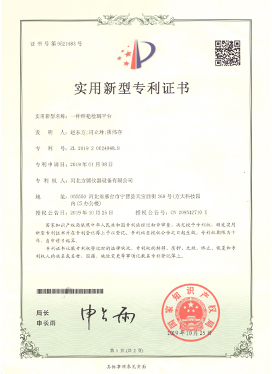Selecting the Right Grips for Tensile Testing in Material Analysis
An Overview of Tensile Tester Grips Importance and Applications
In material testing, tensile testing is a vital process that determines how materials will react under tension. This testing not only evaluates the strength of materials but also helps in understanding their ductility, elasticity, and overall performance. At the heart of tensile testing is the tensile tester, which relies on specialized grips to securely hold materials during the test. This article delves into the significance of tensile tester grips, their types, and their applications.
Tensile tester grips are essential components in tensile testing machines. They serve the crucial function of firmly holding the material specimen in place while an axial load is applied. The accuracy and reliability of test results significantly depend on the grips used, as improper holding can lead to premature failure, slip, or misrepresentation of the material's mechanical properties.
There are several types of grips employed in tensile testing, each designed to accommodate different material types and testing requirements
. The most common types include1. Wedge Grips These grips utilize a wedge mechanism to hold the specimen in place. As the tensile load is applied, the wedge grips tighten, providing a strong hold on the material. Wedge grips are widely used due to their versatility and ability to accommodate various specimen sizes and shapes.
2. Parallel Grips This type of grip consists of two parallel plates designed to hold the specimen firmly without any rotation. Parallel grips are particularly useful for materials that require uniform stress distribution during testing. They are commonly used for testing ductile materials, as they allow for significant elongation without compromising the specimen's hold.
tensile tester grips

3. Electromechanical Grips These grips are often integrated into advanced tensile testing machines and utilize electrical components to provide precise and controlled tensioning. They offer excellent repeatability and can automatically adjust the grip pressure based on the material being tested.
4. Pneumatic Grips Utilizing air pressure, pneumatic grips can quickly and efficiently hold a variety of materials. They are particularly beneficial for high-throughput testing applications, where speed is crucial. However, care must be taken to ensure consistent pressure for accurate test results.
5. Manual Grips As the name suggests, these grips are tightened manually. They are often used in laboratory settings where flexibility is required, and quick adjustments are necessary. While they may not offer the same level of precision as automated grips, manual grips are reliable and cost-effective.
The application of tensile tester grips extends across various industries, including construction, aerospace, automotive, and manufacturing. Each industry requires specific testing standards and protocols to ensure safety and performance. For instance, in the aerospace industry, materials must endure extreme conditions and stresses; therefore, accurate tensile testing is paramount. Similarly, in manufacturing, the properties of raw materials must be assessed to guarantee the longevity and reliability of end products.
Furthermore, tensile testing plays a crucial role in research and development. Engineers and scientists utilize these tests to innovate new materials and improve existing ones. By understanding how materials behave under tension, researchers can develop composites and alloys that meet specific requirements for various applications.
In conclusion, tensile tester grips are an integral part of tensile testing, offering reliability, precision, and adaptability across a range of applications. With ongoing advancements in technology, the design and functionality of grips will continue to evolve, ensuring that material testing remains at the forefront of engineering and innovation. As industries move towards more complex materials and applications, the importance of effective gripping solutions will only increase, ensuring that engineers can extract the most accurate data and insights from their tensile tests.
-
Why the Conductor Resistance Constant Temperature Measurement Machine Redefines Precision
NewsJun.20,2025
-
Reliable Testing Starts Here: Why the High Insulation Resistance Measuring Instrument Is a Must-Have
NewsJun.20,2025
-
Flexible Cable Flexing Test Equipment: The Precision Standard for Cable Durability and Performance Testing
NewsJun.20,2025
-
Digital Measurement Projector: Precision Visualization for Modern Manufacturing
NewsJun.20,2025
-
Computer Control Electronic Tensile Tester: Precision and Power for the Modern Metal Industry
NewsJun.20,2025
-
Cable Spark Tester: Your Ultimate Insulation Assurance for Wire and Cable Testing
NewsJun.20,2025
 Copyright © 2025 Hebei Fangyuan Instrument & Equipment Co.,Ltd. All Rights Reserved. Sitemap | Privacy Policy
Copyright © 2025 Hebei Fangyuan Instrument & Equipment Co.,Ltd. All Rights Reserved. Sitemap | Privacy Policy
